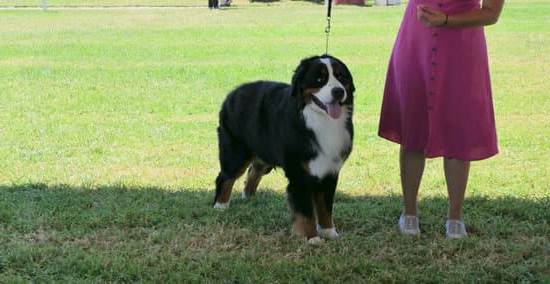Training a dog to track a blood trail is vital for successful hunting expeditions or search and rescue missions. Dogs possess incredible scenting abilities and a natural instinct to track prey or lost individuals, making them valuable partners in these endeavors. In this article, we will explore the significance of training dogs to track blood trails, as well as provide a comprehensive guide on how to train them effectively.
Hunting and search and rescue operations often require tracking wounded game or missing persons. This is where a well-trained blood tracking dog becomes indispensable. The ability of dogs to detect and follow scents has been honed through centuries of selective breeding, resulting in their remarkable olfactory capabilities. By harnessing their innate skills and channeling them through proper training, dogs can become highly efficient at tracking blood trails.
Choosing the right dog breeds for blood tracking is the first step towards success. Certain breeds excel in scent work due to their strong drive for trailing scents. Additionally, considering factors such as size, temperament, intelligence, and trainability plays a crucial role in determining which dog will be most suitable for blood tracking tasks.
By understanding the importance of training dogs to track blood trails, one can fully appreciate the valuable contributions these four-legged companions can make in hunting or search and rescue operations. Through consistent training techniques and building a solid foundation of obedience skills, dogs can learn to not only follow scent trails but also overcome advanced challenges. With dedication and practice, both handlers and their canine partners can achieve remarkable results in tracking blood trails.
Choosing the Right Dog for Blood Tracking
When it comes to training a dog to track blood trails, choosing the right breed is crucial. Not all dogs are equally suited for this task, as certain breeds possess natural instincts and abilities that make them excel in scent work. Here are some key factors to consider when selecting a dog for blood tracking:
- Identify the breeds that excel at blood tracking: Some breeds have a natural drive and talent for scent work. Breeds like Bloodhounds, German Shepherds, and Labrador Retrievers have been widely recognized for their exceptional scenting abilities and track record in blood tracking. These breeds often possess a strong desire to please their handlers and are known for their focus and perseverance when on the trail.
- Consider specific characteristics and size: Dogs used for blood tracking should be of an appropriate size and build for maneuvering through different terrains effectively. A medium to large-sized dog with good endurance is ideal since they may need to cover substantial distances during tracking. Additionally, dogs with a dense coat or protective layers can be advantageous in harsh weather conditions.
- Evaluate temperament, intelligence, and trainability: Dogs selected for blood tracking should have a stable temperament, displaying confidence, curiosity, and independence when working on trails. Intelligence is also an essential factor as dogs will need to learn complex behaviors during training sessions. Furthermore, trainability plays a significant role in shaping a successful tracker; dogs that respond well to positive reinforcement techniques often prove to be more trainable.
Once you have identified the right breed based on these considerations, it’s important to remember that each individual dog has its own personality and potential. Take the time to assess each candidate’s specific traits through interactions before making your final decision. By choosing the right dog for blood tracking, you’ll lay a solid foundation for success in training and increase your chances of achieving exceptional results in real-life tracking scenarios.
- Identify the breeds that excel at blood tracking
- Consider specific characteristics and size
- Evaluate temperament, intelligence, and trainability
Building a Strong Foundation
Basic obedience training is an essential first step in training a dog to track blood trails. This foundation not only establishes a clear line of communication between the handler and the dog but also ensures better control during tracking sessions. Here are some key aspects to consider when implementing basic obedience training for blood tracking:
- Teach essential commands: Start by teaching your dog basic commands such as sit, stay, heel, and recall. These commands will not only facilitate better control but also provide a solid foundation for more advanced tracking techniques. Through consistent repetition and positive reinforcement, the dog will learn to associate these commands with specific actions and behaviors.
- Establish a strong bond: Building a strong bond with your dog is crucial in any form of training, including blood tracking. Positive reinforcement techniques such as rewards, treats, and praise will help create a positive association between tracking activities and the dog’s eagerness to please their handler. Spend quality time with your canine companion outside of training sessions to further enhance the bond between you.
- Consistency is key: Consistency is vital during basic obedience training. Dogs thrive on routine and repetition, so ensure that you consistently reinforce learned behaviors. Whether it’s daily practice sessions or incorporating obedience commands into everyday activities, consistency will enhance your dog’s understanding and response to instructions.
To achieve success in blood tracking, it is essential to spend adequate time and effort on building a strong foundation through basic obedience training. By establishing clear communication channels and strengthening the bond between you and your dog, you set the stage for more advanced tracking techniques that will be covered in subsequent sections of this article.
- Teach essential commands such as sit, stay, heel, and recall
- Use positive reinforcement techniques
- Spend quality time with your canine companion outside of training sessions
- Consistently reinforce learned behaviors
Introducing the Scent of Blood
One of the crucial steps in training a dog to track blood trails is introducing them to the scent of blood. This process is essential as it helps dogs associate the scent with the excitement of the tracking game, thereby igniting their natural instinct to follow and locate prey or lost individuals. The following section will outline effective methods for introducing the scent of blood to your dog during training.
To begin, it is important to create a controlled environment for introducing the scent of blood. This can be done by using small amounts of synthetic or diluted animal blood on a cloth or gauze pad. Start by allowing your dog to sniff and investigate the item without any pressure or expectation. Encourage curiosity and interest while closely observing their reactions.
As your dog becomes more comfortable with investigating the scent of blood, gradually build their association between the scent and the tracking game. This can be achieved by incorporating some form of play or reward immediately after they interact with the blood-scented item. For example, you can toss a toy or treat for them to retrieve as soon as they show interest in the blood scent.
Repetition is key during this stage of training. Regularly expose your dog to the scent of blood in different contexts and locations, gradually increasing their exposure time and distance from the source. Use positive reinforcement techniques such as praise, treats, or playtime whenever they exhibit curiosity or excitement towards the scent.
| Considerations | Details |
|---|---|
| Controlled Environment | Create a safe space where your dog can investigate and interact with the scented item. |
| Positive Reinforcement | Reward your dog with treats, praise, or playtime to associate the scent of blood with a positive experience. |
| Gradual Progression | Slowly increase exposure time and distance from the source to reinforce the association between the scent and tracking game. |
By introducing the scent of blood in a controlled and rewarding manner, you will be laying a solid foundation for your dog’s training in tracking blood trails. This step is crucial in building their interest and understanding of the scent, ensuring that they are prepared for more advanced tracking challenges in the future.
Teaching Tracking Techniques and Behaviors
Introducing the Concept of Following a Blood Trail
Once the dog has mastered basic obedience skills, it is time to introduce them to the concept of tracking a blood trail. This can be done by using a drag cloth or scent trail that contains small amounts of blood. Begin by having the dog watch as you lay down the cloth or create the scent trail, allowing them to observe the process.
Next, encourage the dog to use their nose and follow the trail. Start with short trails and gradually increase the length as they become more proficient. It’s important to remember that tracking is a natural behavior for dogs, so be patient and allow them to work at their own pace. Use commands such as “track” or “find it” to help guide and encourage them along the trail.
Reinforcing Positive Tracking Behaviors
During tracking sessions, it is crucial to reinforce positive behaviors through rewards and praise. Whenever the dog successfully follows the blood trail, offer treats or toys as a reward. Verbal praise such as “good job” or “well done” can also go a long way in building their confidence and reinforcing their tracking abilities.
Additionally, consistency is key when it comes to training dogs to track blood trails. Maintain a consistent training routine and ensure that all family members or handlers are using similar techniques and commands during tracking sessions. This will help solidify their understanding of what is expected of them during these exercises.
Diversifying Training Challenges
As your dog progresses in their tracking abilities, it is important to diversify training challenges in order to simulate real-life scenarios they may encounter while on an actual blood tracking mission. Increase the difficulty level by introducing distractions along the blood trail, such as cross-trails from other animals or scents.
Furthermore, incorporate different terrains and weather conditions into your training sessions. Dogs should experience tracking in various environments, including wooded areas, fields, and even urban settings. This will help them adapt to different surfaces and conditions they may encounter during actual tracking missions.
By continually challenging and exposing the dog to new experiences during training sessions, their problem-solving skills will be enhanced, making them more effective trackers when it matters most. Remember to always maintain a positive and supportive environment throughout the training process for optimal results.
Advanced Tracking Challenges
Once your dog has mastered the basics of tracking blood trails, it’s time to introduce them to more advanced challenges. This will not only help sharpen their tracking skills but also prepare them for real-life scenarios. Here are some ways you can advance your dog’s tracking abilities.
Firstly, consider gradually increasing the difficulty of the tracking challenges. Start by extending the length of the trails your dog needs to track. This will simulate longer distances that may be encountered during hunting or search and rescue missions. By exposing your dog to more challenging trails, they will become more proficient at maintaining focus and successfully following longer blood tracks.
In addition to longer trails, it is crucial to incorporate different terrains into your training sessions. Dogs need to be prepared to track in a variety of environments, such as forests, fields, or even urban areas. Introduce your dog to different types of surfaces, including grass, gravel, and even concrete if possible. This will improve their adaptability and ensure they are well-prepared for any situation they may encounter while tracking a blood trail.
To further enhance your dog’s problem-solving abilities during tracking, introduce distractions and cross-trails into their training routine. These distractions can mimic real-life scenarios where there could be multiple scents or other factors that might divert your dog’s attention from the primary blood trail. By teaching your dog how to stay focused despite distractions or potential cross-trails, they will become more reliable trackers in challenging situations.
Lastly, it is essential to expose your dog to various weather conditions during training sessions. Weather elements such as rain or wind can significantly impact scent dispersal and make tracking more difficult. By incorporating these unpredictable factors into your training sessions, you can better prepare your dog for tracking under different weather circumstances. This will ensure that they can effectively follow a blood trail regardless of the conditions they may face in the field.
By providing advanced tracking challenges for your dog and gradually increasing the difficulty level, you will refine their skills and make them a more reliable tracking partner. Remember to always reinforce their tracking behaviors with positive reinforcement, rewards, and praise. With consistent training and practice, your dog will be ready to face real-life blood tracking situations with confidence.
Fine-tuning and Refining Tracking Skills
Consistent Reinforcement
Once your dog has developed a strong foundation in tracking and has mastered the basic techniques and behaviors, it is important to consistently reinforce their tracking skills. This means regularly practicing tracking exercises and providing positive reinforcement for accurate tracking behaviors. By consistently rewarding your dog for successfully following a blood trail, you are reinforcing the importance of this skill and encouraging them to continue performing at their best.
During these practice sessions, focus on maintaining your dog’s focus and obedience while they are tracking. This will help them stay on task and follow instructions even in distracting or challenging environments. Use verbal cues or hand signals to guide your dog during the tracking process, and reward them with treats or praise when they demonstrate correct tracking behaviors.
Obedience During Tracking
In addition to reinforcing tracking skills, it is essential to work on obedience during tracking sessions. The ability to maintain focus and follow instructions while actively engaged in tracking can greatly enhance your dog’s overall performance. Practice obedience commands such as sit, stay, heel, and recall during tracking exercises to reinforce their understanding of these commands even in high-stimulation situations.
Identifying Challenges and Weaknesses
Throughout the training process, it is important to identify any challenges or weaknesses in your dog’s tracking abilities. Evaluate their performance during different types of tracks, terrains, or weather conditions to determine areas that may require additional attention or training.
Some dogs may struggle with certain elements such as steep inclines, dense vegetation, or distractions along the trail. Once identified, you can tailor your training approach to address these specific challenges and help your dog become more well-rounded in their blood-tracking skills.
By fine-tuning and refining your dog’s tracking skills through consistent reinforcement, obedience training during tracking sessions, and identifying any challenges or weaknesses that need improvement, you can ensure that they become accurate and reliable trackers. The more you work with your dog and continue to strengthen their abilities, the better equipped they will be in real-life situations where their tracking skills are needed.
Real-Life Application
Once a dog has undergone training to track blood trails, it is crucial to assess their skills through real-life application. Testing the dog’s blood tracking abilities not only ensures their readiness for hunting or search and rescue missions but also helps identify areas that may need improvement. Here are some key factors to consider when testing a dog’s blood tracking skills.
Firstly, it is important to simulate realistic scenarios during testing. By creating trails with varying lengths and terrains, handlers can evaluate the dog’s ability to adapt and track under different conditions. This also helps in assessing the dog’s problem-solving skills as they encounter obstacles like fallen trees or uneven ground. Additionally, incorporating distractions or cross-trails is essential to mimic real-life situations where there might be interference from other scents competing with the target blood trail.
During testing, handlers should observe the dog closely to ensure they maintain focus and demonstrate accurate tracking behaviors. Dogs should exhibit strong scenting abilities by keeping their nose close to the ground and following the trail systematically. Paying attention to body language is crucial as well; a focused and determined posture indicates that the dog is engaged in tracking. On the other hand, signs of distraction or lack of focus should be noted for further training improvement.
Lastly, testing should include evaluation of obedience during tracking sessions. A well-trained tracking dog should listen and respond promptly to commands even when faced with enticing distractions along the trail.
Handlers should ensure that the dog maintains good leash manners, remains focused on the task at hand, and follows instructions such as ‘sit,’ ‘stay,’ or ‘heel’ when necessary. Incorporating obedience into testing helps determine whether the dog can perform effectively in demanding real-life situations where disciplined behavior is essential.
By conducting rigorous testing of a dog’s blood tracking skills in various scenarios, handlers can gain confidence in their canine companions’ abilities while also identifying areas for further training and improvement. Regular testing is crucial to maintain and reinforce the dog’s tracking proficiency.
Future advancements in training techniques and technology can be explored to continuously enhance their scent work capabilities. Overall, ensuring that a trained dog is tested under realistic conditions serves as a testament to their reliability and effectiveness in blood tracking tasks.
Conclusion
In conclusion, training a dog to track a blood trail can be an incredibly rewarding endeavor. Not only does it contribute to successful hunting or search and rescue missions, but it also allows owners to tap into the incredible capabilities of their four-legged companions. Throughout this article, we have explored the importance of training a dog to track blood trail and the steps involved in achieving this skill.
First and foremost, choosing the right dog for blood tracking is crucial. The breeds that excel at scent work and possess a natural drive for tracking should be considered. Additionally, evaluating the characteristics and size of the dog is essential to ensure they are best suited for blood tracking. Temperament, intelligence, and trainability are also factors that should not be overlooked when choosing a suitable candidate.
Building a strong foundation through basic obedience training sets the stage for successful blood tracking endeavors. Teaching essential commands such as sit, stay, heel, and recall helps establish control during tracking sessions. This step also allows for a strong bond to form between owner and dog through positive reinforcement techniques.
Introducing the scent of blood gradually familiarizes the dog with its associated excitement during tracking games. Utilizing scent training aids enhances their recognition and understanding of the blood scent. Teaching specific tracking techniques and behaviors enables dogs to follow a blood trail using their noses while maintaining focus systematically. With advanced challenges like longer trails or different terrains, dogs develop problem-solving skills necessary for various real-life scenarios.
Throughout fine-tuning and refining tracking skills, reinforcing desired behaviors becomes vital to ensure accuracy and reliability. Addressing any challenges or weaknesses in their abilities guarantees effective tracking results. Testing dogs’ skills in real-life situations further evaluates their proficiency while emphasizing continuous practice to maintain these abilities.
Frequently Asked Questions
How do I train my dog to be a blood tracker?
Training a dog to be a blood tracker involves a gradual and systematic process. Start by introducing the dog to the scent of blood, allowing them to become familiar with it. One effective method is to use a scent sample or a small amount of blood on an object and let the dog sniff it.
Then, gradually increase the difficulty by hiding these objects in various locations for the dog to find using their sense of smell. Consistency is key throughout this training process, be patient and reward your dog for their success. Gradually transition from using objects with blood scent to actual animal scent until your dog becomes proficient at tracking.
Can dogs track deer with no blood trail?
Yes, dogs are incredibly skilled at tracking animals even without a visible blood trail. They have an exceptional sense of smell that allows them to detect traces of scent left by deer or other animals as they move through the environment.
Dogs can pick up on subtle scents such as footprints, disturbed foliage, or natural glands that animals secrete, helping them follow the path of deer even when no blood is present. It’s important to note that while dogs are capable of tracking without a blood trail, utilizing additional cues like fresh tracks or broken branches can enhance their effectiveness.
How long does it take to train a dog to track a deer?
The duration required to train a dog to track deer can vary depending on several factors such as the breed, age, prior training experience, and individual aptitude of the dog. On average, it may take several months to fully train a dog for deer tracking purposes. This timeframe typically includes initial scent introduction and gradually exposing the dogs to different environments and challenges relevant to tracking deer in real-world scenarios.
Consistency and regular practice sessions are crucial during training so that dogs have ample opportunity to refine their skills and become confident in tracking deer trails accurately. Remember that each dog is unique, so some may require more time while others catch on quickly with dedicated training efforts.

Welcome to the blog! I am a professional dog trainer and have been working with dogs for many years. In this blog, I will be discussing various topics related to dog training, including tips, tricks, and advice. I hope you find this information helpful and informative. Thanks for reading!





